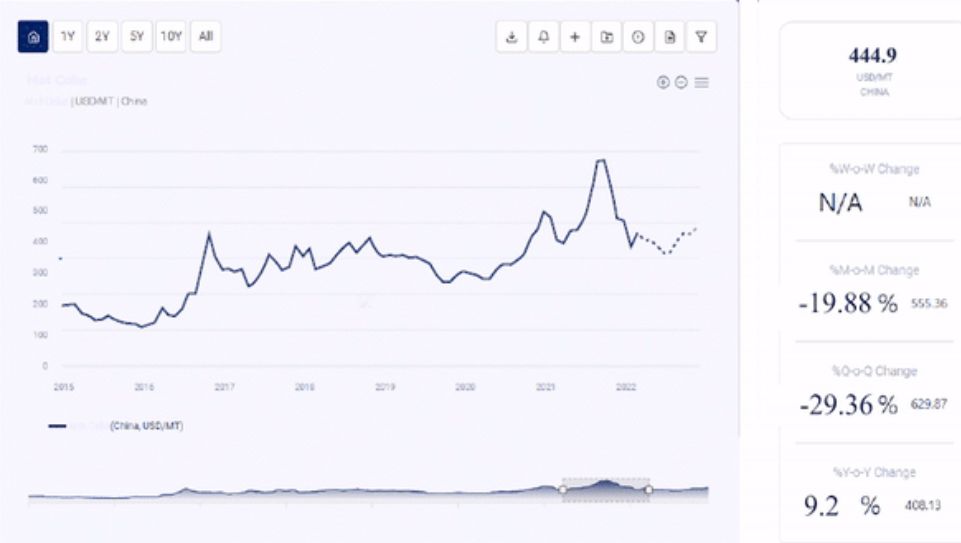
In a world where rice serves as a staple food for billions, understanding its price movements, trends, and forecasts becomes paramount. From Asia to North America, and from Europe to the Middle East & Africa, the dynamics of rice pricing impact economies, food security, and consumer choices worldwide. In this comprehensive press release, we delve into the intricacies of rice pricing, trends, and forecasts, offering valuable insights for stakeholders across the globe.
Request For Sample: https://www.procurementresource.com/resource-center/rice-price-trends/pricerequest
Get the latest insights on price movement and trend analysis of Rice in different regions across the world (Asia, Europe, North America, Latin America, and the Middle East & Africa). Rice, being one of the most consumed staples globally, undergoes fluctuating prices influenced by various factors ranging from climatic conditions to geopolitical tensions. Understanding these trends and forecasts is crucial for governments, farmers, traders, and consumers alike.
Definition
Rice, scientifically known as Oryza sativa, is a cereal grain consumed by a significant portion of the world’s population. With its origins dating back thousands of years, rice plays a vital role in global agriculture and food security. Its versatility in culinary applications, coupled with its nutritional value, makes it a staple food for over half of the world’s population.
Key Details About the Rice Price Trend
The price trend of rice is subject to various factors, including but not limited to:
-
Weather Conditions: Rice cultivation heavily depends on climatic conditions, with factors like rainfall, temperature, and natural disasters significantly impacting yields and subsequently prices.
-
Demand and Supply Dynamics: Fluctuations in demand due to population growth, dietary shifts, and economic conditions, coupled with supply disruptions, influence rice prices on a global scale.
-
Government Policies and Regulations: Government interventions such as subsidies, tariffs, and trade agreements can have a profound impact on rice prices, especially in regions where rice production is a significant economic activity.
-
Currency Exchange Rates: Since rice is traded internationally, fluctuations in currency exchange rates can affect import/export dynamics and ultimately influence prices.
Industrial Uses Impacting the Rice Price Trend
While rice is predominantly consumed as a food staple, its industrial uses also contribute to its price trend. These include:
-
Food Processing: Rice is utilized in various food processing industries to produce products like rice flour, rice bran oil, and rice-based snacks. Fluctuations in demand from these sectors can influence rice prices.
-
Biofuel Production: With the growing interest in renewable energy sources, rice has emerged as a potential feedstock for biofuel production. Changes in biofuel policies and technologies can impact the demand for rice and consequently its prices.
-
Pharmaceuticals and Cosmetics: Certain by-products of rice, such as rice bran, are used in pharmaceuticals and cosmetics. Trends in these industries can indirectly affect the demand for rice and its derivatives.
Key Players
Several key players influence the global rice market, including:
-
Farmers and Producers: Primary stakeholders involved in rice cultivation and production, their decisions regarding planting, harvesting, and pricing significantly impact market dynamics.
-
Traders and Distributors: Entities involved in the buying, selling, and distribution of rice play a crucial role in connecting producers with consumers and influencing price movements through supply chain activities.
-
Government Agencies: Regulatory bodies and government agencies formulate policies, provide subsidies, and regulate trade, directly impacting rice prices and market stability.
-
International Organizations: Entities like the Food and Agriculture Organization (FAO) and the International Rice Research Institute (IRRI) conduct research, provide data, and offer guidance to stakeholders, shaping the global rice market.
Conclusion
In conclusion, understanding the complex dynamics of rice prices, trends, and forecasts is essential for stakeholders across the globe. Whether it’s governments ensuring food security, farmers optimizing production, or consumers making informed purchasing decisions, access to timely and accurate information is crucial. By leveraging procurement resources and staying informed about rice market trends, stakeholders can navigate the challenges and opportunities presented by the dynamic nature of the global rice market.
Contact Us:
Company Name: Procurement Resource
Contact Person: Christeen Johnson
Email: [email protected]
Toll-Free Number: USA & Canada – Phone no: +1 307 363 1045 | UK – Phone no: +44 7537 132103 | Asia-Pacific (APAC) – Phone no: +91 1203185500
Address: 30 North Gould Street, Sheridan, WY 82801, USA





